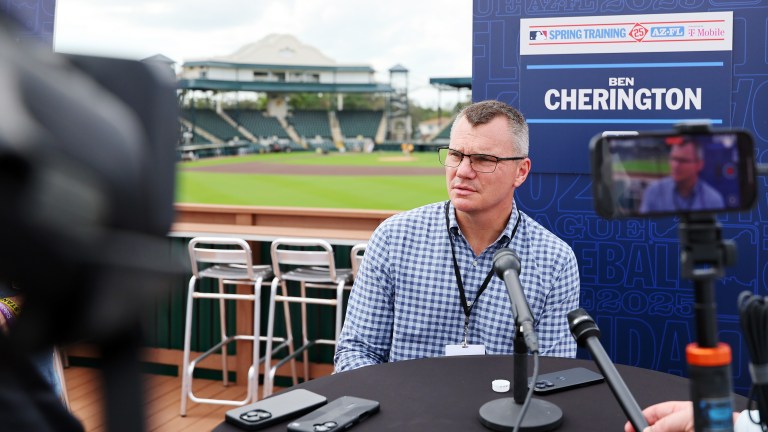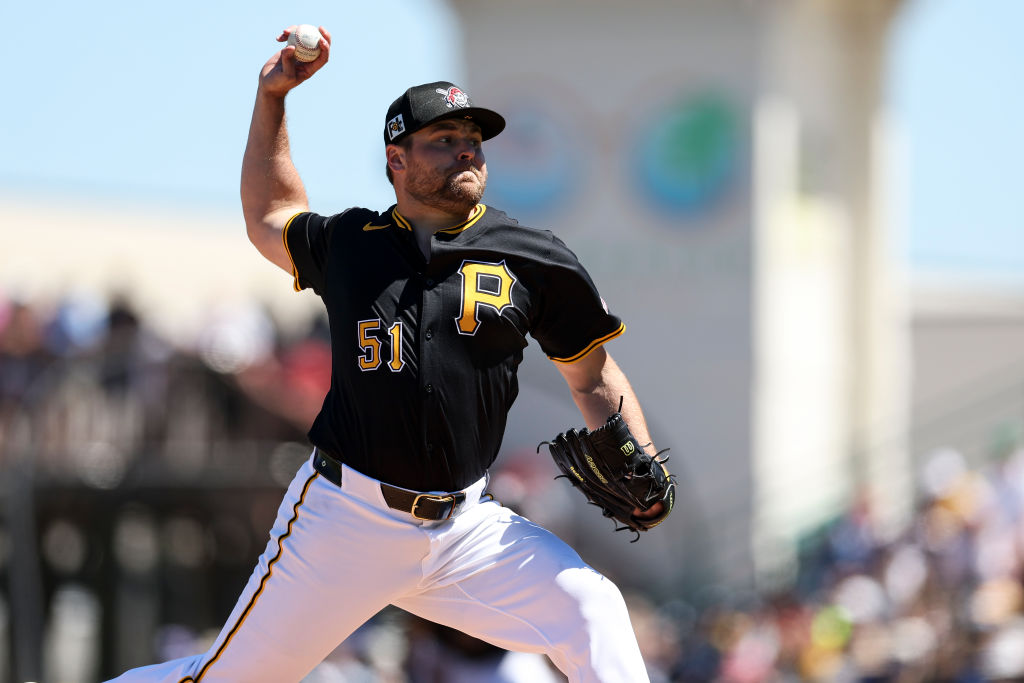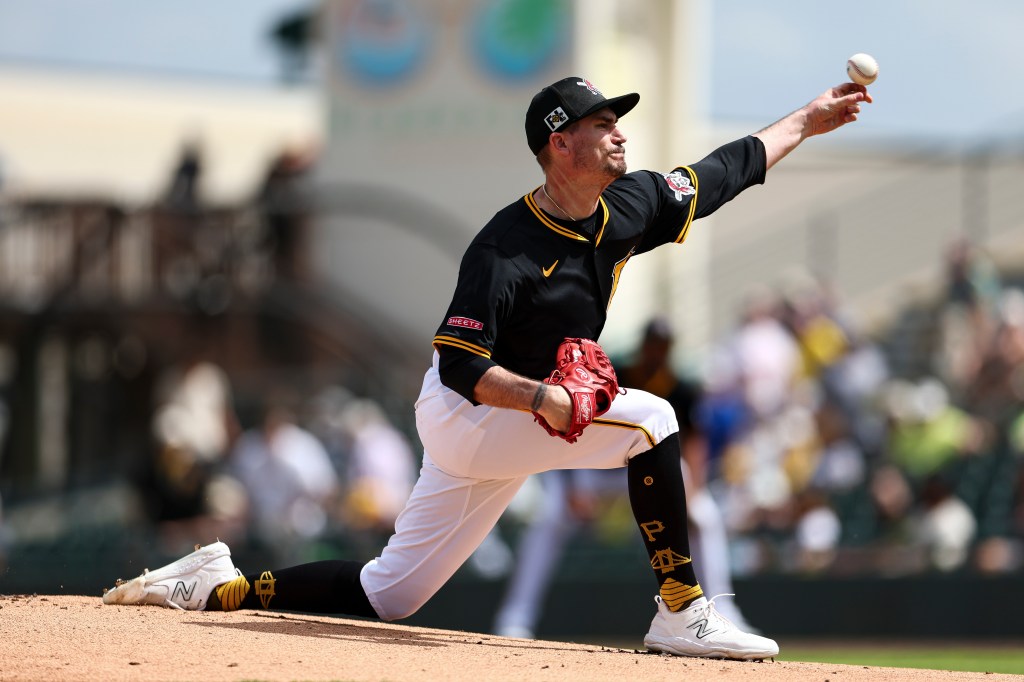Pirates’ Deadline Decisions Reveal Deep Organizational Failures
What could have been a strong trade deadline for the Pirates turned into yet another disappointment.

Heading into this year’s deadline, it was clear that teams were gearing up for a seller’s market and preparing their systems accordingly. This was especially true for the Pittsburgh Pirates, who found themselves in the perfect position to sell.
The Pirates entered this deadline with two legitimate bullpen stars in a market that was paying heavily for such players, as well as multiple players on contracts that expired at the end of the year. Given the prices teams were paying for other teams’ players of the same caliber, the Pirates were in a very good position.
Due to how the Pirates have drafted during the Ben Cherington era, they have plenty of impressive arms in their system (and on their big league roster) without much offensive help. However, at the deadline, if they played their cards right, they could have finally supplemented the pitching with some offensive reinforcements.
Instead, this deadline shaped up to be one of the worst in recent memory for the club. They failed to properly sell, resulting in a very negative reaction from the fan base for the second straight year on deadline day.
Let’s take a closer look at the moves they made and see what went wrong for the Pirates during this year’s trade deadline.
Evaluating the Trades The Pirates Made

The Pirates finished their deadline festivities having made five moves, a number far below what many people expected to see from the Bucs. With so many expiring deals, valuable assets, and the fact that this year was a seller’s market, the writing on the wall pointed towards the Pirates being one of the more active teams on deadline day.
There’s still something to be said for all five of these moves, though. Let’s dive in.
Pirates Trade Ke’Bryan Hayes to Reds for Sammy Stafura, Taylor Rogers, and Cash
Grade: B+
The Pirates kicked off their deadline by sending Ke’Bryan Hayes to the Cincinnati Reds on Wednesday, a move that took the fanbase slightly by surprise. While it was expected that Hayes would be moved, many fans were shocked to see the trade eventually come with a division rival.
The Pirates got a decent return, which was highlighted by a 2023 second-round pick, shortstop Sammy Stafura. Stafura is currently in his second year at Single-A, where he’s been dominant so far.
Through 88 games in the Reds’ system, Stafura slugged four homers and slashed .262/.393/.411 with a 131 wRC+. He’s just 20 years old, and there’s certainly something here in his game. Stafura has also stolen 28 bases this year, showcasing his ability to be an all-around player.
The Pirates desperately need some offensive help, and Stafura seems like he could be a decent bright spot in the lower minors. With Stafura hitting so well in his second year at Single-A, it would have made sense to see him go straight to High-A Greensboro, but instead, he has reported to Single-A Bradenton.
The Pirates ultimately flipped Taylor Rogers on deadline day, meaning we won’t spend too much time going in-depth on that aspect of the deal.
For the Pirates, while it’s sad to see a once-promising young player with an amazing glove in Ke’Bryan Hayes leave the team, the writing has been on the wall for a little while now.
I wrote about Hayes’ complicated trade value earlier this month, and I mentioned that his bat was reaching a point where the team couldn’t wait for it to develop any longer. He posted a 57 wRC+ for Pittsburgh this season while on a decent-sized extension, and with the Pirates getting a decent offensive player back, it was time to move on.
Pirates Trade Caleb Ferguson to Seattle Mariners for right-hander Jeter Martinez
Grade: B+
I mentioned earlier that the expectation was that the Pirates would be moving many of their expiring contracts, but they only ended up moving one of those players. The one they’d eventually deal from this group was left-hander Caleb Ferguson.
Ferguson was inked to a one-year, $3 million deal this offseason, and he had been a nice bullpen piece for the Pirates during his time on the team. Ferguson had pitched to a 3.74 ERA across 43.1 innings, allowing the Pirates to acquire an interesting pitching prospect in exchange for him.
This prospect was right-hander Jeter Martinez, a very solid young arm whose only downside is his (lack of) control. Martinez was one of the more promising young arms in the Mariners’ system, but there is a lot of concern around his accuracy.
His raw stuff is fantastic, but Martinez walked 38 batters in 62.2 innings this season before the trade, making him a bit of a wild card acquisition. However, with the Pirates’ pitching development, he could become a very solid arm.
It’s hard to ask for a better return for a solid reliever on an expiring contract, making this trade grade out solidly for the team.
Pirates Trade David Bednar to New York Yankees for Rafael Flores, Edgleen Perez, and Brian Sanchez
Grade: D-
The third trade the Pirates made at this year’s deadline would end up being their most impactful. The team dealt two-time All-Star David Bednar to the New York Yankees, marking their biggest move this season. Much to the displeasure of fans everywhere, this trade was a complete disaster, as the return they got for Bednar was quite underwhelming.
The headliner of the package was catcher Rafael Flores, a prospect I find quite interesting. I wrote about Flores earlier this year after seeing him play in person, and I was very impressed with him overall. He even stood out to me more than Spencer Jones, a prospect the Yankees have held in high regard.
This season in the Yankees’ system, between two levels, Flores slashed .279/.351/.475 with 16 homers and a 141 wRC+, some pretty elite production overall. He was recently promoted to Triple-A, where he ran into some more league-average outcomes. Regardless, he is quite an interesting prospect.
Alongside Flores, the Pirates walked away with Edgleen Perez and Brian Sanchez, a pair of semi-intriguing prospects.
Perez is the more interesting of these two players, as his elite swing decisions have allowed him to be held in high regard as a prospect. He’s struggled in Single-A this year, though, as the 19-year-old has posted a wRC+ of 91. However, his walk and strikeout numbers, alongside his on-base percentage, both show something to be excited about.
As for Sanchez, there’s a lot more production on the surface to get excited about. He’s slashed .281/.373/.438 with four homers and a 129 wRC+ in Single-A. Sanchez is just 20 years old, giving him a positive outlook as future offensive help in the outfield.
While all of these pieces are quite interesting, this package is atrocious compared to the returns other relievers on the market were fetching. You could make the argument that Bednar has outperformed Jhoan Duran this season, and the Twins were able to fetch two top-100 prospects (on some lists) for Duran.
With Bednar being so dominant and having another year of control after this season, I fully expected to see a package at least within the same ballpark as those for some of the other top relief arms available. However, the Pirates opted for the Yankees’ package, making this one of the worst reliever deals this deadline.
In an interview after the deadline, Cherington said, “We had access to players who were ranked [higher]. We did, and we preferred this package. Obviously, every team is going to assess the players a little bit differently, and sometimes that could be different from the public rankings also.”
This leaves me wondering why the Pirates didn’t try to pursue a better package for Bednar. Understandably, they value certain prospects differently than other teams, but with the reliever market this season, I’m just left asking: Why?
Pirates Trade Bailey Falter to Kansas City Royals for Evan Sisk and Callan Moss
Grade: D
One of the other more impactful moves the Pirates eventually made ahead of this year’s deadline came when they dealt left-hander Bailey Falter to the Kansas City Royals. Falter was one of the more interesting pieces the Pirates had on the block this year, as he’s in the midst of a career season while also having multiple years of control left.
The Pirates ended up dealing Falter for a package below what many anticipated, as they received left-hander Evan Sisk and first baseman Callan Moss from the Royals.
Sisk is a pretty decent arm, all things considered, as he’s pitched well across Triple-A and the major leagues this season. Prior to the trade, he recorded a 3.77 ERA across 28.2 Triple-A innings, while also striking out 36 batters and walking just nine.
This success translated into the time he spent in the big leagues, as Sisk made five solid relief appearances for Kansas City. He pitched to an ERA just under 1.70, striking out 11 batters in 5.1 innings pitched.
As for Moss, he was a pretty solid bat in 92 games with the Quad Cities River Bandits (High-A) this year. He slashed .270/.372/.418 with seven homers and a 123 wRC+. He also maintained encouraging plate discipline numbers while driving in 70 runs.
While there are definitely things to like in this deal, it’s a questionable one at the same time. Falter is under control until the end of the 2028 season and posted a career-best ERA+ of 115 alongside other career-high marks.
For the Pirates to net this type of return for an arm of this caliber is quite disappointing. This became even more puzzling after Pirates beat writer Noah Hiles reported that Falter was viewed as a non-tender candidate this offseason, which is very confusing.
It’s unclear why the Pirates would be considering non-tendering Falter after a career season, especially knowing how much control they have left and the demand for starters on the market. Instead, they don’t have to worry about it, as they settled for this package from the Royals.
Once again, though, I’m just left asking: Why?
Pirates Trade Taylor Rogers to Chicago Cubs for Ivan Brethowr
Grade: B
The Pirates capped off deadline day with one final trade, as they flipped Taylor Rogers to the Chicago Cubs for outfielder Ivan Brethowr.
It wasn’t surprising to see Rogers flipped, as he was going to be making a decent chunk of money during the final year of his contract. With the Pirates also electing to keep Dennis Santana, the need for another very good relief arm disappeared, and the fact that they need offensive help took priority.
They responded by acquiring Ivan Brethowr, a fairly interesting outfield prospect from the Cubs. Brethowr is in his second professional season, and he’s been solid this year in High-A.
Across 83 games in Chicago’s system, Brethowr slashed .221/.398/.312 with four homers and a 113 wRC+. There’s no denying that this was solid production from the 22-year-old, and he could soon earn a Double-A promotion with his new organization.
This is a depth move above all, as Brethowr will hopefully help add to the offense in the system.
Who Did The Pirates Keep?

While some of the trades the Pirates made were quite puzzling, one could argue that the players they elected to keep were more confusing. I previously mentioned that the Pirates had a multitude of players on expiring contracts, yet decided to keep almost all of them.
This group of players most notably consisted of Isiah Kiner-Falefa, Andrew Heaney, and Tommy Pham, among others. These three names are the most notable due to the presumption that they’d all be easily movable.
Kiner-Falefa had been generating some decent trade interest, as he’d add valuable depth to a contending team. Although his bat is well below league average, his versatility and slap-hitting nature make him an interesting depth piece.
Heaney felt like a surefire candidate to get traded, as he’d potentially be a very solid innings-eater for any team. He’s pitched to an 86 ERA+ across 110.1 innings, thanks to some decent stretches earlier in the season.
After figuring out his eye issue earlier this year, Pham has been one of the best hitters in the sport. He’s slashed .390/.436/.640 with a 195 wRC+ since June 22, ranking near the top of National League leaderboards.
Many people figured Pham would be a surefire candidate to land with a contending team and continue this hot streak, but this was not the case.
Despite rumors surrounding both players, the Pirates also elected to keep reliever Dennis Santana and reliable starter Mitch Keller as well. At points, it felt like both players were going to be moved without a doubt, but they ended up staying at the end of the day.
To say the least, it was surprising to see the Pirates hold on to so many players with expiring contracts. The club desperately needs to bolster its offensive core in the minors, and with this being such a strong seller’s market, this felt like the perfect opportunity to do so.
Yet, for some reason, the Pirates stood pat, trusting their current pieces.
What This Deadline Says About the Pirates’ Long-Term Direction

Now that the deadline has passed, we can truly assess the moves the team made, and when doing so, it’s quite difficult not to be left with a sour taste in your mouth for a multitude of reasons.
First and foremost, as I mentioned when going over the Bednar trade, the Pirates significantly undersold on one of the best relievers in the sport. Seeing the Pirates take such an offer while other teams received multiple top-100 prospects and higher-ranking prospects was infuriating, especially for a hometown player who is beloved by the city.
When it came to trading Bednar, it was one of those moves that had to be done, given the haul they could’ve gotten in return. They had the chance to significantly bolster their minor league offense, yet dropped the ball completely. This stands even more true when you take into consideration Cherington’s interview, in which he said the team had access to higher-ranking players.
Cherington further went on to say, “We could’ve acquired proven major league bats, absolutely. There were opportunities on the table for us. We could’ve done it, just not at a price we’re comfortable with. I think we’ve just got to carry that into the offseason.”
To be quite honest, these types of quotes from Cherington just feel like a total slap in the face for fans everywhere. The club has been so desperate to add offense, and to hear him openly admit they could’ve done so more significantly is just heartbreaking, to say the least.
It was disappointing to see the Pirates hold Falter in such low regard as well, as they significantly undersold on him as well while also alluding to the fact that they’d consider non-tendering him in the offseason. It’s confusing to say the least, especially when you consider he’s in the midst of a career season.
Underselling on both Bednar and Falter wasn’t the team’s only puzzling decision, as their choice to hold onto several expiring contracts was also confusing.
Not only did they miss out on the chance to bring back significant prospect packages, but they’ve further blocked some of their top prospects by doing this. With the team being so far out of a playoff spot as well, they gain nothing with this approach.
In what should have been a pivotal year to move the Pittsburgh Pirates forward, Cherington once again failed to capitalize on a seller’s market at the trade deadline, a recurring theme in his tenure as general manager.
For a club that claims to be building for the future, the Pirates neither added meaningful prospects nor cleared a path for internal development. Instead, they clung to veterans with minimal long-term value and made fringe deals that showed indecision rather than a confident vision.
This isn’t new for Cherington either, as his lack of success and conviction on the trade market has been a recurring theme during his tenure. At some point, the excuses lose their credibility. The Pirates entered the deadline with the pieces to build the future and left with more questions than answers.
While the problems come from the top down, there’s a very good chance that this is one of Cherington’s last deadlines as the general manager, as this monumental failure of a deadline will likely, and deservingly, advance the process to eventually remove him from the helm.
